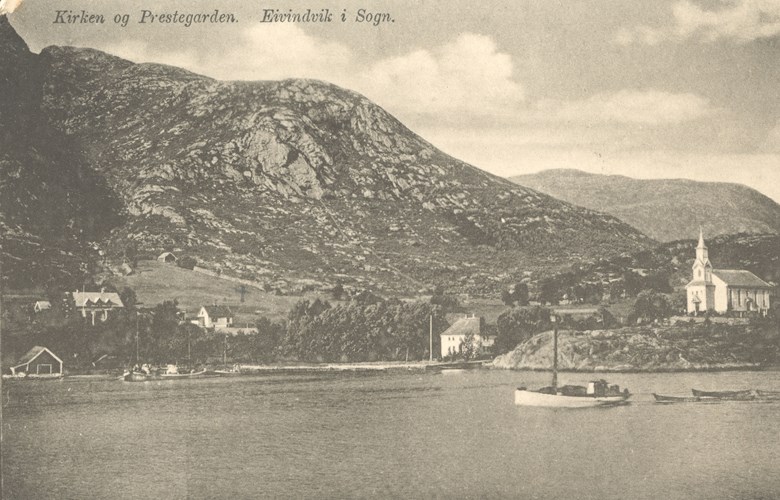From the British Isles
The cross is 2.85 metres high, 1.15 metres wide, and 6 - 15 centimetres thick. It is made of so-called Hyllestad rock, a mica schist interspersed with garnet. It has a smooth surface without any decoration, straight sides on the cross arms and rounded armpits.
Of the 60 stone crosses found in Norway, 54 are located in western Norway, and among these the simple cross at the churchyard gate at Eivindvik belongs to a small group called "Norwegian-Celtic". The tradition of erecting stone crosses stems from the British Isles. The Celtic cross form may indicate that there was a church or missionary connection to the Celtic areas of the British Isles, such as Wales, the Isle of Man, and Ireland.
Linked to Olaf
The crosses at Eivindvik were probably erected in connection with the christening of Norway. According to one legend, Olaf raised the crosses to consecrate the ground for services. Another legend has it that Olaf shot three arrows in various directions from the court site and put up a cross where the arrows landed. The stone cross expert Fridtjov Birkeli (1906-1983) thinks that it is likely that it was Olaf Tryggvason who raised the crosses before the Eivindvik church was built.
"Gulatinget"
The christening of the country took for example place through resolutions at court assemblies, and both crosses may have been erected in connection with such a decision. Stone crosses elsewhere are also raised close to court sites, for example at Tinghaug and Krosshaug in Fosen in Trøndelag and Thingvellir on Iceland. In this way the crosses have been used throughout the years in the discussion of the location of the "Gulating". Several places have been suggested, such as Eivindvik, Midtunvågen, Flolid and Stemnebø. The crosses have been used as evidence to support that "Gulatinget" was located at Eivindvik, at least for a period.
Instead of a church?
The earliest written description of the crosses dates from 1626, and it describes the crosses just about the way we see them today. According to a legend, the Celtic cross was originally located down by the seaside, probably together with a font made of the same rock. One hypothesis has it that the font and the cross were made for a mass baptism ceremony carried out by Olaf Tryggvason. However, there are no written sources that can corroborate that the cross has been located at other places than by the churchyard gate. The famous dean at Eivindvik, Niels Griis Alstrup Dahl (1778 - 1852), took a keen interest in the crosses and was of the opinion that the cross was erected as a Christian meeting-point before the church was built.
The cross today
A situation report from 1994 points out that the cross is very much weathered and cracks have opened up. The report also mentions that the cross is close to the road and is likely to be hit by cars parking. A memorial that was erected at Flolid in connection with the choice of "Gulatinget" as the millennium site of the county of Sogn og Fjordane bears a strong resemblance to the crosses. The two crosses are also depicted on the municipal coat of arms for Gulen.





